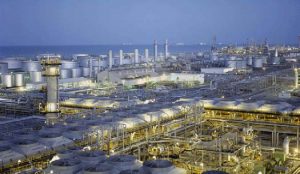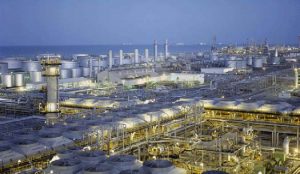Aromatics, olefins, and refinery plans continue in bid to enhance integration
Despite the low oil price and other GCC project cutbacks, Kuwait is pressing ahead with investments in refinery, olefins, and aromatics to build capacity and improve integration, increasing efficiencies For decades, the oil and gas industry has been one of the key drivers of economic growth in the GCC region, complemented by the rise of its petrochemicals industry. Low-cost feedstocks and state entities focused on adding value to oil reserves fed the development of huge, worldscale petrochemicals complexes. But this advantage has diminished with the rise of North American shale gas production.
 The collapse in oil prices led players in the GCC region to re-examine the investment case of some slated projects, leading to the scrapping of a $6.5bn petrochemicals project in Ras Laffan, Qatar, by Qatar Petroleum and Shell, for instance.
The collapse in oil prices led players in the GCC region to re-examine the investment case of some slated projects, leading to the scrapping of a $6.5bn petrochemicals project in Ras Laffan, Qatar, by Qatar Petroleum and Shell, for instance.
Similarly, the GCC’s worldleader status for the production of olefins, commodity polymers and aromatics has been threatened by the wave of gigantic new plants being developed across the US Gulf Coast, while higher-cost or lower-capacity producers in the Arabian Gulf have struggled to adapt to the lower oil price.
In Kuwait, for example, chemical production capacity stagnated between 2013 and 2016 at 8.7m to 8.8m tons/year, due in part to the oil and gas sector, which has underpinned the country’s economic development, suffering from slumping oil prices.
This has led to fresh reassessments of planned projects in the country, with infrastructure, land use and feedstock pricing all presenting blocks to growth. However, this is starting to change, with innovations and the establishment of a price floor for oil at above $50/bbl clearing for the way for the country to position itself as one of the GCC’s engines of petrochemicals growth over the next few years.
Kuwait is expected to be a key driver behind a CAGR of 3% in polymers capacity in the GCC, to 34.5m ton/year by 2022, alongside Saudi Arabia and Oman.
“Whilst the dominance of chemical companies in the region is perhaps not as strong as it has been in previous decades, growth can be achieved provided action is taken to ensure competitiveness and resilience,” says Gopal Balasubramaniam, head of Energy and Natural Resources at KPMG Middle East and South Asia.
While Kuwaiti producers have predominantly been commodity chemical producers, GCC firms are increasingly diversifying portfolios towards specialties such as engineering plastics and elastomers, expected to support in turn the development of the downstream industry in the region, according to GPCA.
Kuwait’s Petrochemicals Industry Company (PIC) is expected to be a key player in achieving that growth through its Olefins III project, the latest in a series of new installations focusing on olefins and aromatics capacity.
While petrochemicals’ production growth has been static in the country over the last few years, the project would see the development of a worldscale (1.4 million tons/year of ethylene) olefins complex in the country with a mixed-feed cracker. Production capacity is estimated at 1 million tons/year of polyethylene (PE) and 400,000-600,000 tons/year of polypropylene (PP), targeting Asia as the primary market and the Middle East and Europe as secondary markets.
It follows the development of an aromatics complex at the Shuaiba Industrial Area, completed in December 2009. The site produces 830,000 tonnes/ year of paraxylene (PX) and 390,000 tonnes/ year of benzene.
The company has also bet on a significant increase in PX demand in the future, targeting a 1.4 million tons/year ramp-up in capacity by 2022 as part of an integrated aromatics project that will be incorporated into the Al- Zour refinery complex.
The project will also produce 940,000 tons/year of PP, 420,000 tons/year of gasoline and 208,900 tons/year of fuel, utilising propene and naphtha from the refinery.
Integration will be tightened further along the value chain with the development of the USD14bn, 615,000 bbl/day Al-Zour refinery being developed in the country by Kuwait Petroleum Corp (KPC), PIC’s parent company.
Deputy CEO for Olefins and Aromatics at PIC Hosnia Hashem says the Third Olefins and Second Aromatics Project Integrated with Al-Zour Refinery is considered one of the most important strategic initiatives for PIC. “It seeks to improve Kuwait’s position in the petrochemical industry and execute the company’s strategy of expansion in basic petrochemicals. It is also a model of integration between KPC subsidiaries.”
The country made the decision to move forward with the megaproject in 2015, with the view that oil prices move in cycles but that the underlying economics of the project made it worthwhile.
Set to dramatically increase Kuwait’s refining capacity, the majority of oil products are intended for export, but the refinery will also help to make up the shortfall from the closure of the 200,000 bbl/day Shuaiba refinery.
Shuttered over poor economics, Shuaiba was the smallest of Kuwait’s three refineries. The closure has cut refining capacity in the country to 730,000 bbl/day until Al-Zour comes on-stream.
Question marks had existed over whether to move forward with additional petrochemicals capacity, but Olefins III received a boost with the award of a contract spanning Al-Zour and PIC’s petrochemicals complexes.
The unit will be tightly integrated with PIC’s olefins and aromatics units, with engineering firm Amec Foster Wheeler winning a six-year contract to integrate PIC’s Olefins III and Aromatics II complexes with Al- Zour, a six-year project covering front-end engineering design and project management consultancy.
Despite the rise of international competition, the Arabian Gulf region still benefits from some of the lowest feedstocks costs in the world, making it a powerful player amid the increasingly cut-throat margins of global petrochemicals production.
US chemicals giant Dow Chemical, which went through a period of scrutinizing its Kuwait joint venture portfolio, recently reaffirmed the potential of the projects it holds with PIC.
“They want to grow the business, and we’re a partner that can help them. Despite what happened six years ago, they want us to be there. The joint venture makes a lot of money and we think the deals are a win-winwin,” said Andrew Liveris, Dow CEO in 2015.



